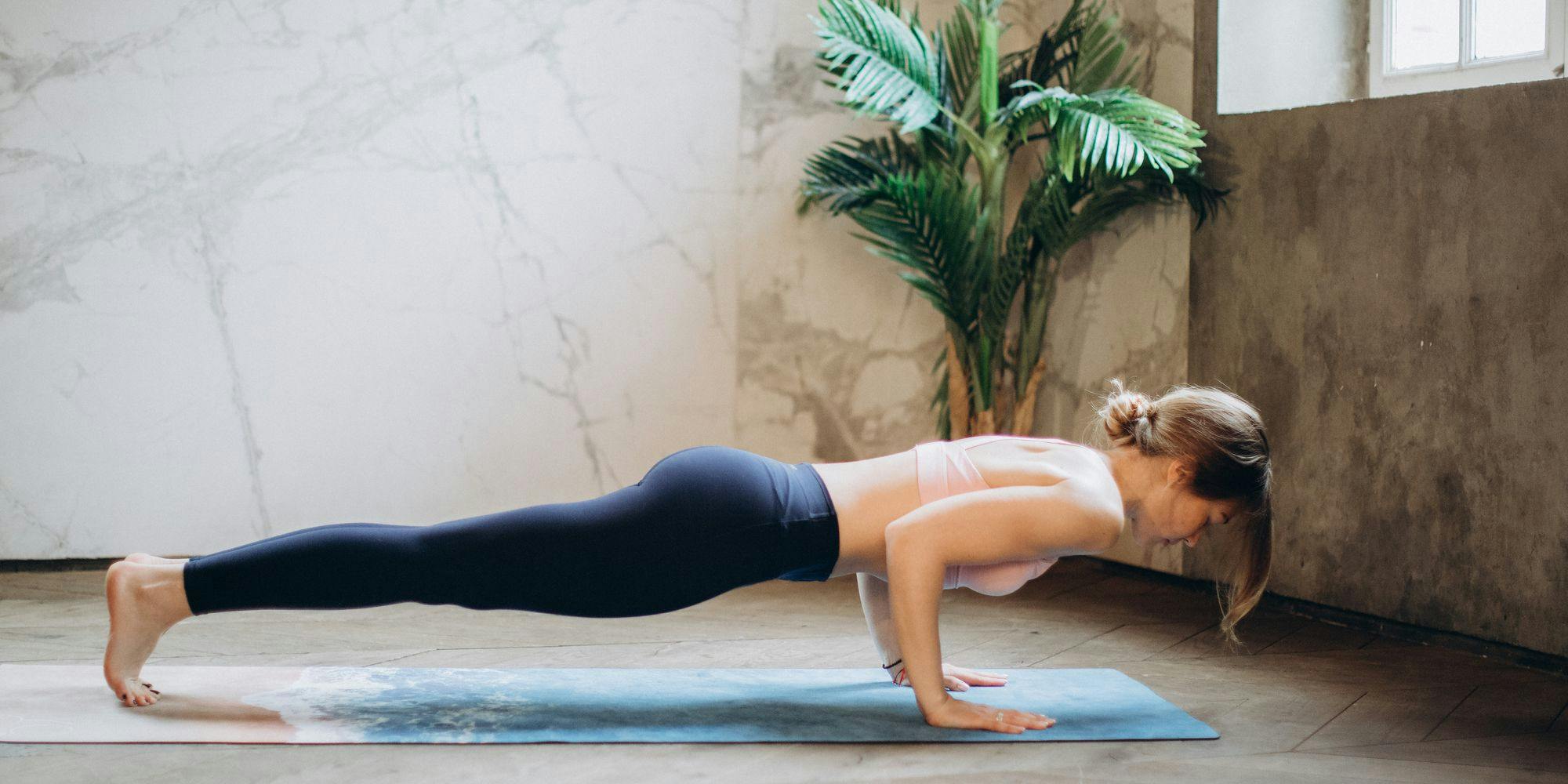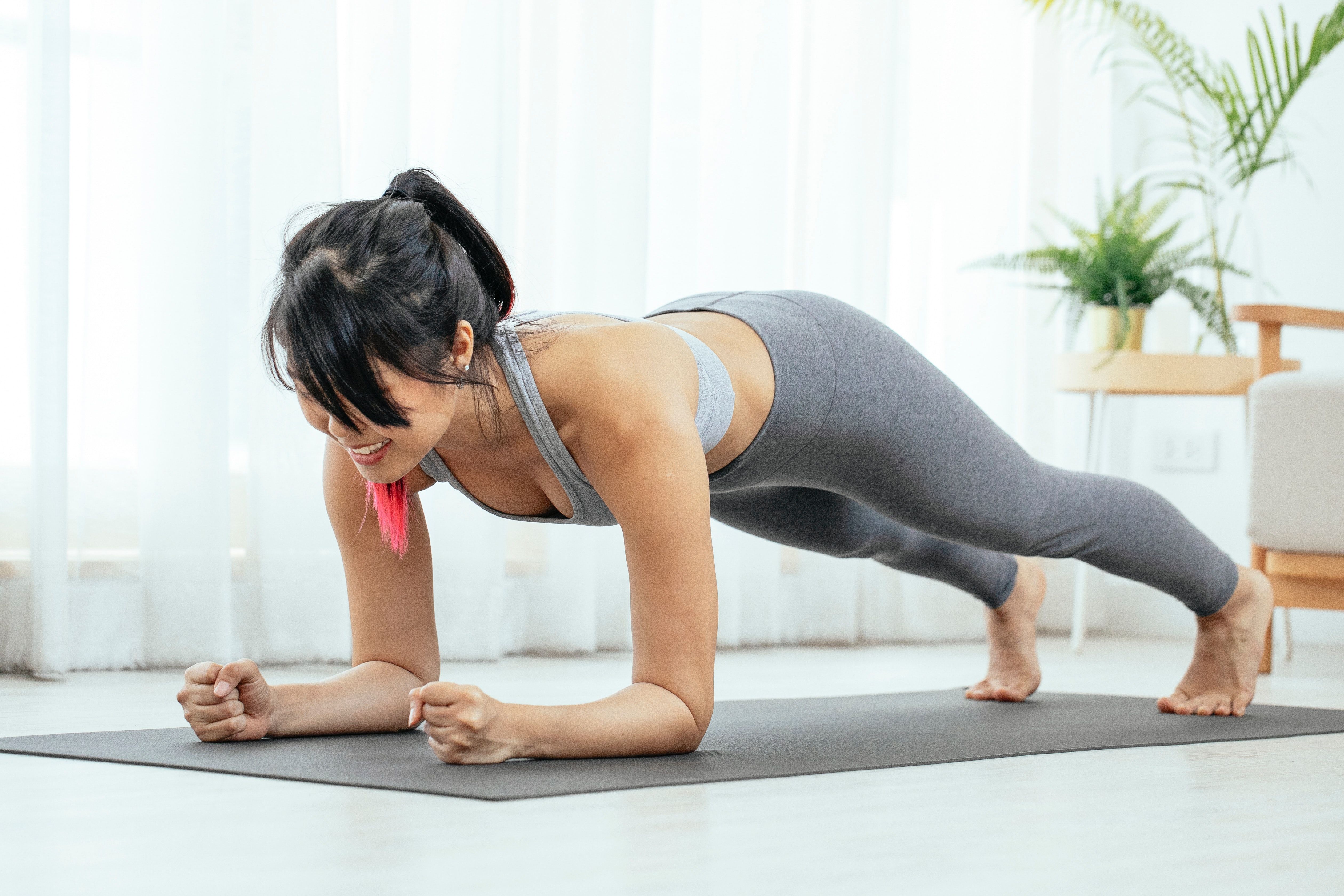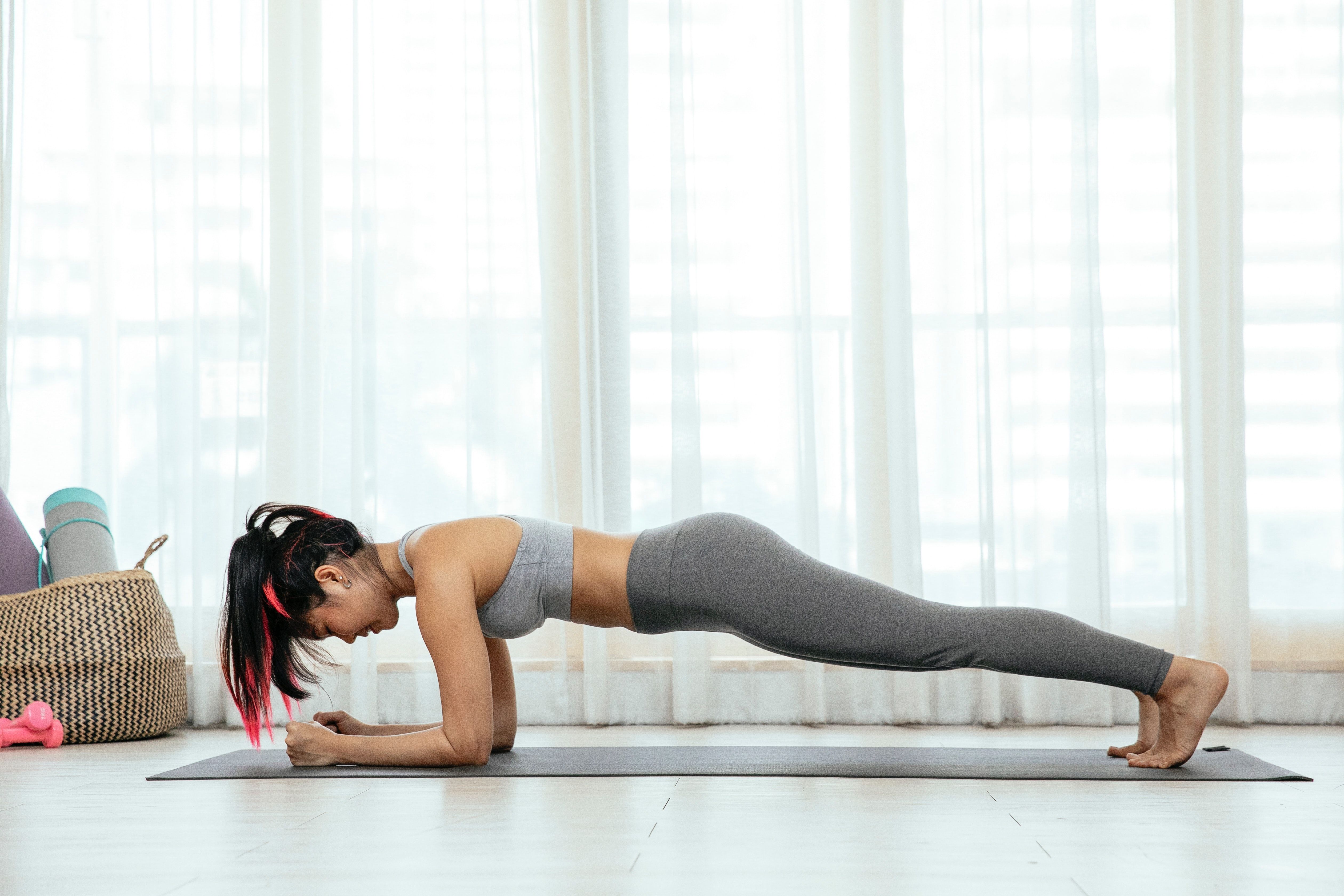Plank Workout: Correct Position, Benefits, Hold Time



Core strength is essential for various reasons, including its fundamental function in sustaining general health, fitness, and daily activities. Planks, crunches, leg raises, and Russian twists are a few exercises that should be included in your fitness program if you want to strengthen your core. Yoga and Pilates, for example, both emphasize core stability and are good for developing total core strength. Remember that developing a stable and functional core that supports your body is what it means to have strong abdominal muscles.

Popular core-strengthening exercise known as the plank requires sustaining a position like the top of a push-up for a lengthy amount of time. It's a really efficient approach to target and build up the abdominal, oblique, and lower back muscles that make up your core. How to conduct a basic plank exercise is as follows:
Correct Plank Position:
- Start in a push-up position with your arms outstretched and your hands placed directly beneath your shoulders.From your head to your heels, your body ought to be arranged in a straight line. Aim to keep your feet hip-width apart or together, whatever feels more comfortable.
Focus on Your Core:
- Pull your navel closer your spine to tighten your abdominal muscles. To keep the right posture throughout the exercise, it is essential to engage in this activity.
Keep Your Alignment Correct:
- Maintain a straight body and prevent your back from drooping or arching.
- Keep your neck and spine in proper alignment by keeping your gaze fixed on the ground.
Maintain Position:
- As long as you can, hold the plank posture while maintaining appropriate form.
Inhale Naturally:
- Continue to breathe normally during the activity. Try not to hold your breath.
Conclude securely:
- Gently bring your knees to the floor to complete the plank position, then unwind.
Variations of the plank exercise include side planks, forearm planks, and elevated planks, which target different areas of the core and provide variety to your core-strengthening routine.
Side planks, forearm planks, and elevated planks are all variations of the plank exercise that work different parts of the core and add diversity to your core-strengthening program.

How long should you hold a plank?
Your level of fitness and your objectives will determine the average plank time. Planks are a difficult workout for developing your core, and the length of time you should strive for varies from person to person. Follow some general recommendations depending on levels of fitness:
Beginners: Start with shorter holds, such as 10–20 seconds, if you're new to planks or have a low level of fitness. As you become more accustomed to the exercise, keep your form in check and gradually lengthen the workout.
Intermediate: Aim for plank holds 30 to 60 seconds as you increase strength and stamina. You can exercise your core muscles at this time without getting too tired.
Advanced: People who are advanced can maintain a plank for at least 60 seconds. Some highly skilled athletes can even maintain 5 minutes plank or longer. It's crucial to keep your form excellent the entire time.
Certain objectives: You can modify the length of your planks if you have certain fitness objectives, such as enhancing core strength or endurance. For instance, you might strive to maintain a plank for two to three minutes or longer if you're preparing for an event or competition.

Benefits of Doing Planks
Core Strengthening: Planks work the rectus abdominis (the front of the abdomen), transverse abdominis (the deep core muscles), obliques (the side of the abdomen), and lower back muscles, which are the main muscles that are strengthened by this exercise. For proper posture, balance, and overall strength, a strong and stable core is necessary, which is created as a result.
Improved Posture: A stronger core is necessary for maintaining excellent posture, which results in an improvement in posture. Long periods of sitting typically result in bad posture and back pain, so planks can help offset those consequences.
Reduced Risk of Back Pain: Planks can aid in lowering the risk of lower back discomfort and enhancing spinal stability by strengthening the muscles that support the spine and the core.
Enhanced Athletic Performance: For many sports and physical activities, a strong core is essential. Your capacity to produce power, distribute force between your upper and lower bodies, and maintain equilibrium during dynamic movements can all be improved with planks.
Increased Flexibility: The shoulders, shoulder blades, clavicle, and hamstrings are just a few of the muscle groups that planks stretch and lengthen. Over time, this may lead to more flexibility.
Better Balance: Planks test your proprioception—your awareness of where your body is in space and balance. Your ability to maintain balance in a variety of activities can be improved with regular practice.
Injury Prevention: Increasing stability and strengthening the core helps lower the risk of injury during daily activities and exercise regimens.
Effective Calorie Burn: Planks work several muscular groups at once, increasing calorie expenditure. Even though they are not cardiovascular exercises, including them in a full-body workout plan can nevertheless help with calorie burning and weight loss.
Mental Focus: Plank holding involves mental discipline and focus, which over time can help you become more mentally resilient and focused.
Variety of Progressions: As people get stronger, planks can be performed in a variety of ways and at various levels, allowing them to keep pushing themselves. Side planks, forearm planks, and dynamic planks are a few of these variations.
Enhanced Respiratory Function: Planks call for controlled breathing, which can enhance lung capacity and the transport of oxygen to the muscles.

